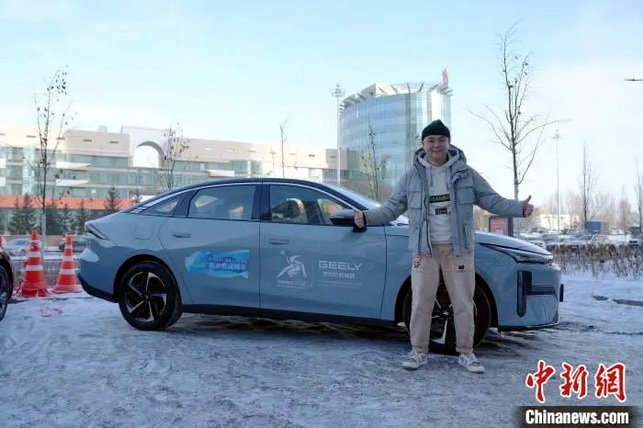
Chinese Road Enthusiast Crosses the Silk Road in an Electric Car, Telling the World About China Through Travel
Tashkent, Uzbekistan (UzDaily.com) — “We’ve had experience crossing Eurasia in off-road vehicles, but traveling through Central Asia in winter in a compact electric car requires much more careful preparation. Drivers need to take local climate conditions into account, plan routes seriously, and avoid sparsely populated areas whenever possible,” said Chinese automotive expert Qu Jing in an interview with China News Service in Astana.
At the invitation of a Chinese car manufacturer, Qu Jing and his team set off from Astana in a Chinese-made electric vehicle and, over the course of two weeks, crossed five Central Asian countries along the route of the historic Silk Road, heading to their final destination: the city of Harbin in China.
After several heavy snowfalls in early December, Astana was blanketed in snow, with the sound of snowplows echoing through the streets. Against this backdrop, the Chinese EV with green license plates stood out. While checking the car’s equipment, Qu Jing shared insights from his journey: “This 10,000-kilometer expedition not only promotes the upcoming Winter Asian Games, but also serves as an excellent opportunity to test the car’s performance in diverse climate conditions.”
At 37, Qu Jing is a passionate off-road traveler with professional expertise in driving and testing vehicles. He and his team recently completed another long-distance, cross-border journey in a Chinese electric vehicle. Starting in Liuzhou, Guangxi, they exited China via Xinjiang, passed through Kazakhstan, Azerbaijan, and other countries along the Trans-Caspian International Transport Route, and reached Paris to take part in an international auto show.
“The biggest challenge when traveling abroad in an EV is charging—especially in remote parts of Central Asia,” he recalled. “Once, in a small village in Kazakhstan, we tried to charge the car, and as soon as we plugged it in, the village lost power. But the locals were incredibly kind and helped us resolve the issue. That really moved us.”
Qu Jing’s social media pages are filled with hundreds of photos documenting his years of travel—cityscapes, local cuisine, road scenes, and moments with friends. He considers himself fortunate to have turned his hobby into a profession.
“Around 2016, singer Li Jian’s song On the Shore of Lake Baikal sparked a travel boom to Russia. That’s when my friends and I started a business in Irkutsk. In 2017, we organized a ring-shaped off-road rally around Baikal with a Chinese team. That marked the beginning of our journey,” he recalled.
“In 2018, during the FIFA World Cup in Russia, Chinese car brands approached us. They wanted to test off-road and cold-weather performance of their vehicles on Lake Baikal as part of their marketing. Back then, we didn’t even realize we were part of what would become a golden age of China’s automotive industry.”
Since 2021, after partnering with China’s first electric vehicle company, Qu Jing has witnessed the rapid rise of China’s homegrown auto sector. One word he uses most often to describe Chinese EVs is progress.
“There was a time when Chinese EVs had a mixed reputation. We experienced reduced range in cold temperatures, electronic glitches at high speeds. But those issues are rapidly disappearing as technology improves. Many manufacturers listen to our feedback, invite us to test updates—and that shows they genuinely care about quality.”
“Now, wherever we go in a Chinese EV, we attract attention. People come up to ask about prices, features, or to sit in the driver’s seat,” Qu Jing smiled. “We try to answer all their questions—after all, we’ve received plenty of help on the road too.”
Reflecting on his journey, Qu Jing speaks with emotion: “I’ve lived and worked abroad for over ten years. The more countries I visit, the stronger I feel my bond with home. Not long ago in Serbia, locals showed me a bridge and said, ‘That was built by the Chinese.’ In that moment, I felt truly proud.”
Looking forward to the next leg of the journey, he said warmly, “The final stop on this route is China—it’s a return home. I hope this journey shows the world the strength of Chinese manufacturing and the charm of today’s China.”